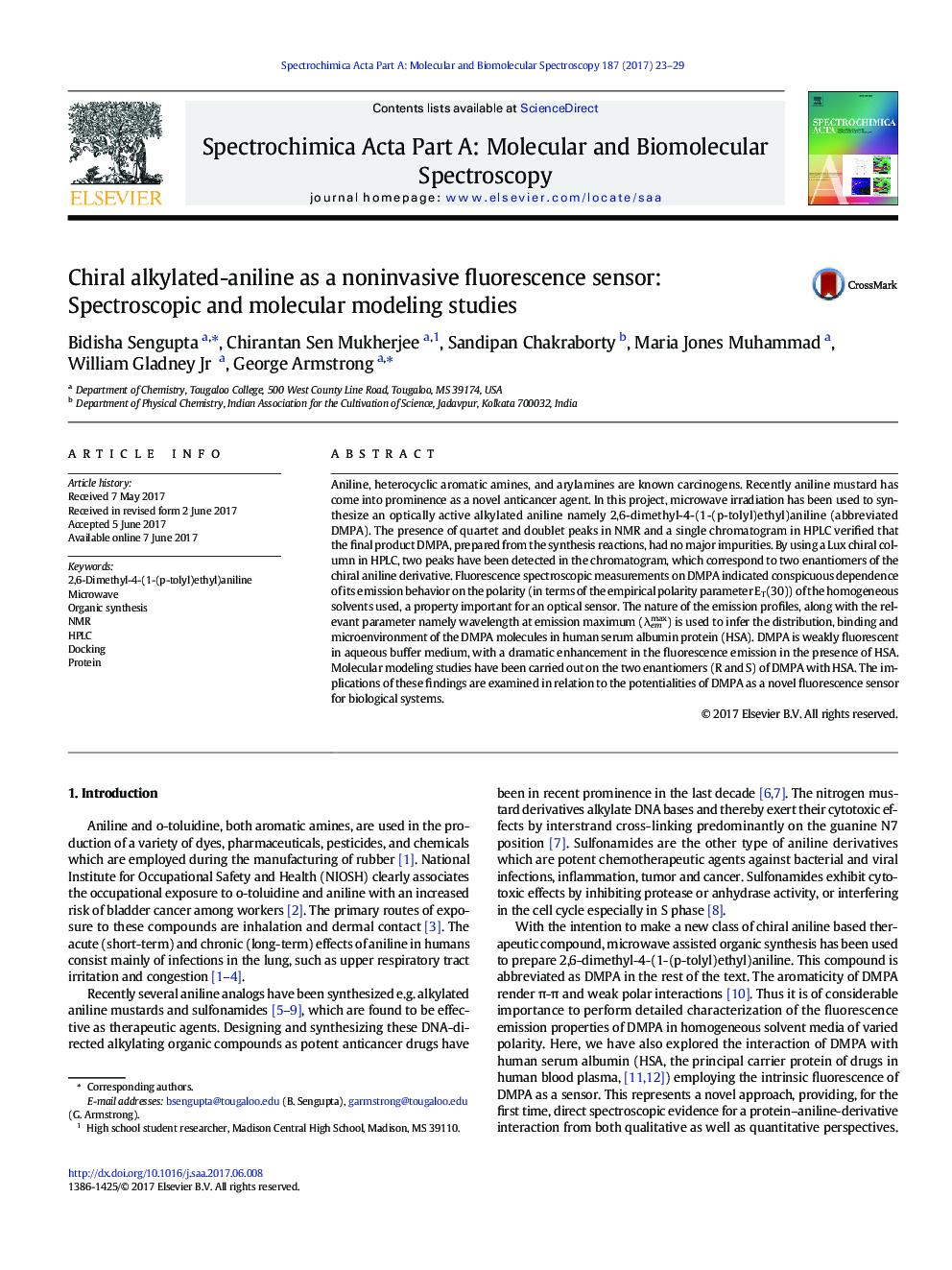| کد مقاله | کد نشریه | سال انتشار | مقاله انگلیسی | نسخه تمام متن |
|---|---|---|---|---|
| 5139554 | 1495182 | 2017 | 7 صفحه PDF | دانلود رایگان |

- An optically active novel aniline derivative DMPA is synthesized.
- NMR and HPLC proved the purity and the presence of two enantiomers.
- DMPA entiomers show selective binding affinity with HSA.
- Binding of DMPA does not alter the secondary structure of HSA.
Aniline, heterocyclic aromatic amines, and arylamines are known carcinogens. Recently aniline mustard has come into prominence as a novel anticancer agent. In this project, microwave irradiation has been used to synthesize an optically active alkylated aniline namely 2,6-dimethyl-4-(1-(p-tolyl)ethyl)aniline (abbreviated DMPA). The presence of quartet and doublet peaks in NMR and a single chromatogram in HPLC verified that the final product DMPA, prepared from the synthesis reactions, had no major impurities. By using a Lux chiral column in HPLC, two peaks have been detected in the chromatogram, which correspond to two enantiomers of the chiral aniline derivative. Fluorescence spectroscopic measurements on DMPA indicated conspicuous dependence of its emission behavior on the polarity (in terms of the empirical polarity parameter ET(30)) of the homogeneous solvents used, a property important for an optical sensor. The nature of the emission profiles, along with the relevant parameter namely wavelength at emission maximum (λemmax) is used to infer the distribution, binding and microenvironment of the DMPA molecules in human serum albumin protein (HSA). DMPA is weakly fluorescent in aqueous buffer medium, with a dramatic enhancement in the fluorescence emission in the presence of HSA. Molecular modeling studies have been carried out on the two enantiomers (R and S) of DMPA with HSA. The implications of these findings are examined in relation to the potentialities of DMPA as a novel fluorescence sensor for biological systems.
Graphical Abstract151
Journal: Spectrochimica Acta Part A: Molecular and Biomolecular Spectroscopy - Volume 187, 5 December 2017, Pages 23-29